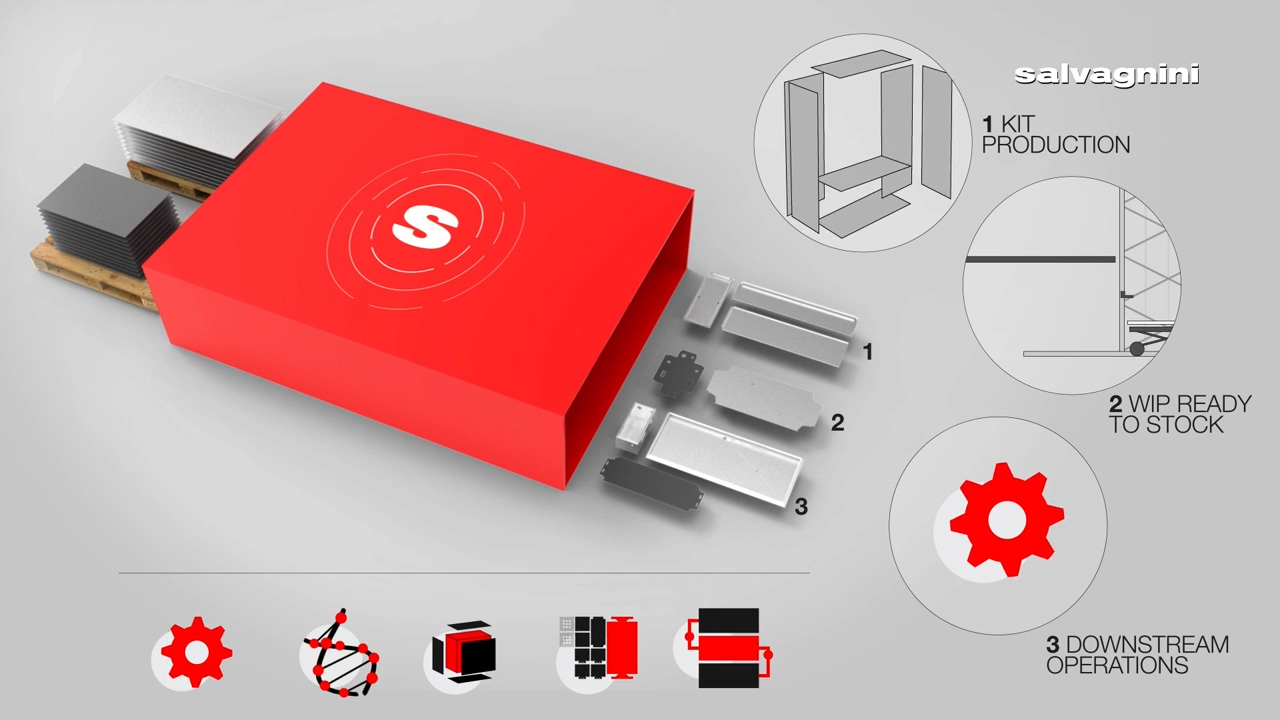Flexible automation for sheet metal production
Automation according to Salvagnini
Flexible automation means transforming packs of sheet metal into a wide variety of products, in a lean environment and with no intervention by the operator, in a progressive production process, using proprietary punching, cutting, bending and panel bending technology.
Individual production step
Being competitive today does not merely mean having fast single part production: the challenge lies in the efficiency of each individual production step. Flexible, autonomous, and smart systems are a decisive factor for managing production today, but also for improving quality and reducing lead times and scrap.
Activities with low added value
Efficiency improvement lies in the ability to reduce, if not fully eliminate, redundant activities or those with low added value which typically occur upstream and downstream of individual systems for preparating, feeding and connecting.
Process management and optimization
That’s what digitalization and Industry 4.0 are all about: making available solutions that are easy to use, in order to focus on control and production process optimization. Salvagnini has been concretely tackling this issue since 1993, when it launched the first OPS, the modular software for managing production.
Salvagnini replaces this purely quantitative approach with another that combines both quantity and quality.
Efficiency, and therefore productivity, can be regained shifting from the idea of production capacity to that of production control.
To fully exploit the benefits assured by flexible automation.


